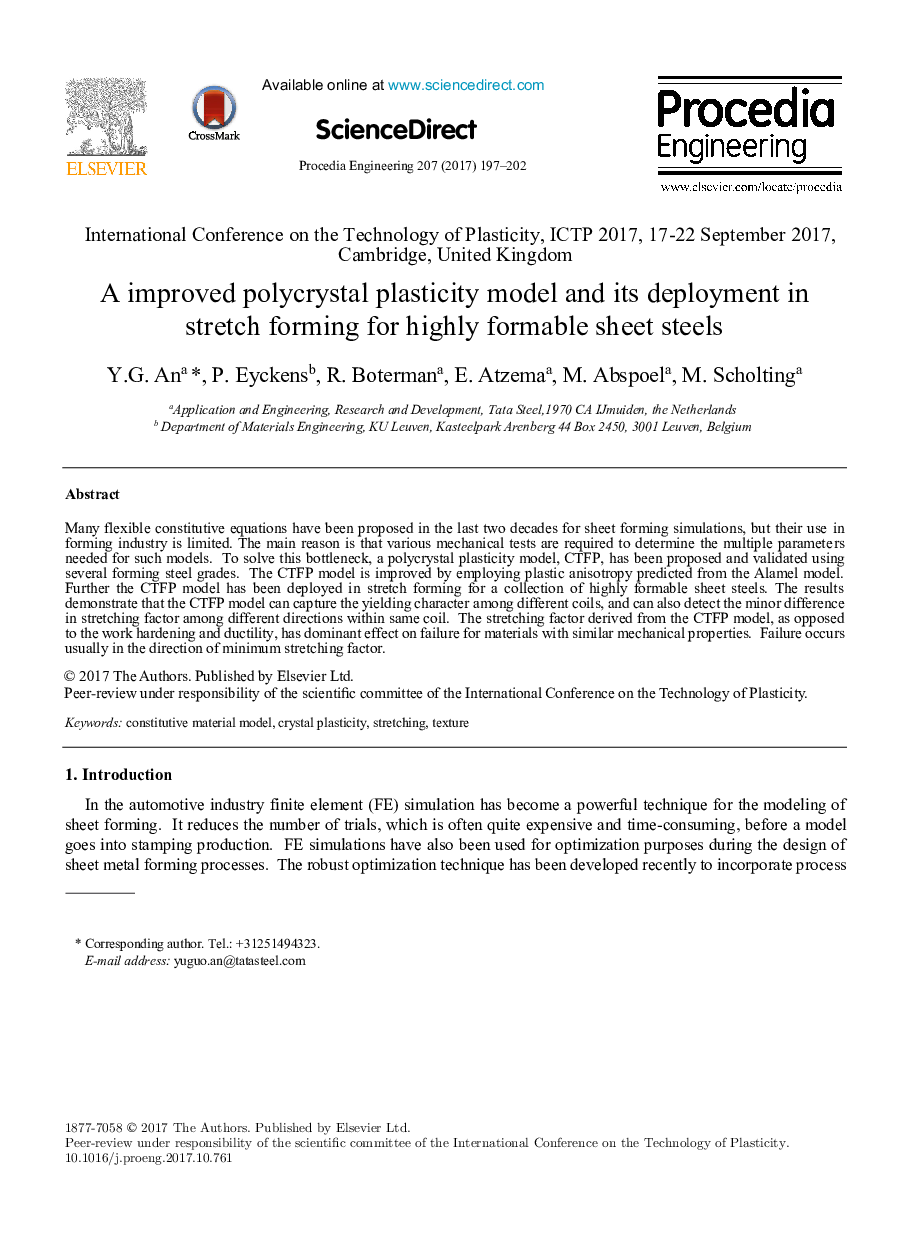| Article ID | Journal | Published Year | Pages | File Type |
|---|---|---|---|---|
| 7227103 | Procedia Engineering | 2017 | 6 Pages |
Abstract
Many flexible constitutive equations have been proposed in the last two decades for sheet forming simulations, but their use in forming industry is limited. The main reason is that various mechanical tests are required to determine the multiple parameters needed for such models. To solve this bottleneck, a polycrystal plasticity model, CTFP, has been proposed and validated using several forming steel grades. The CTFP model is improved by employing plastic anisotropy predicted from the Alamel model. Further the CTFP model has been deployed in stretch forming for a collection of highly formable sheet steels. The results demonstrate that the CTFP model can capture the yielding character among different coils, and can also detect the minor difference in stretching factor among different directions within same coil. The stretching factor derived from the CTFP model, as opposed to the work hardening and ductility, has dominant effect on failure for materials with similar mechanical properties. Failure occurs usually in the direction of minimum stretching factor.
Related Topics
Physical Sciences and Engineering
Engineering
Engineering (General)
Authors
Y.G. An, P. Eyckens, R. Boterman, E. Atzema, M. Abspoel, M. Scholting,
